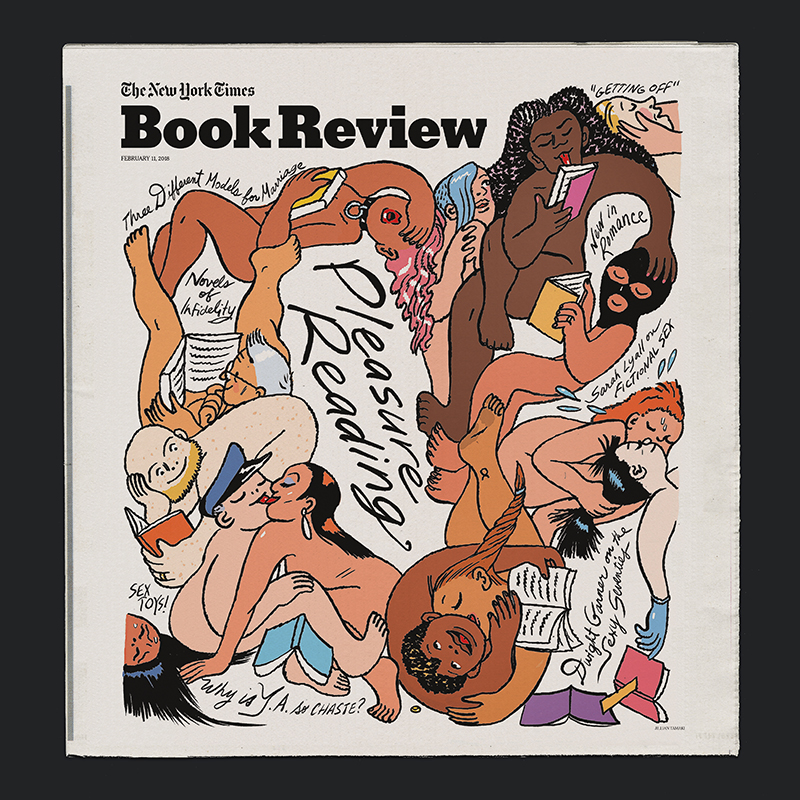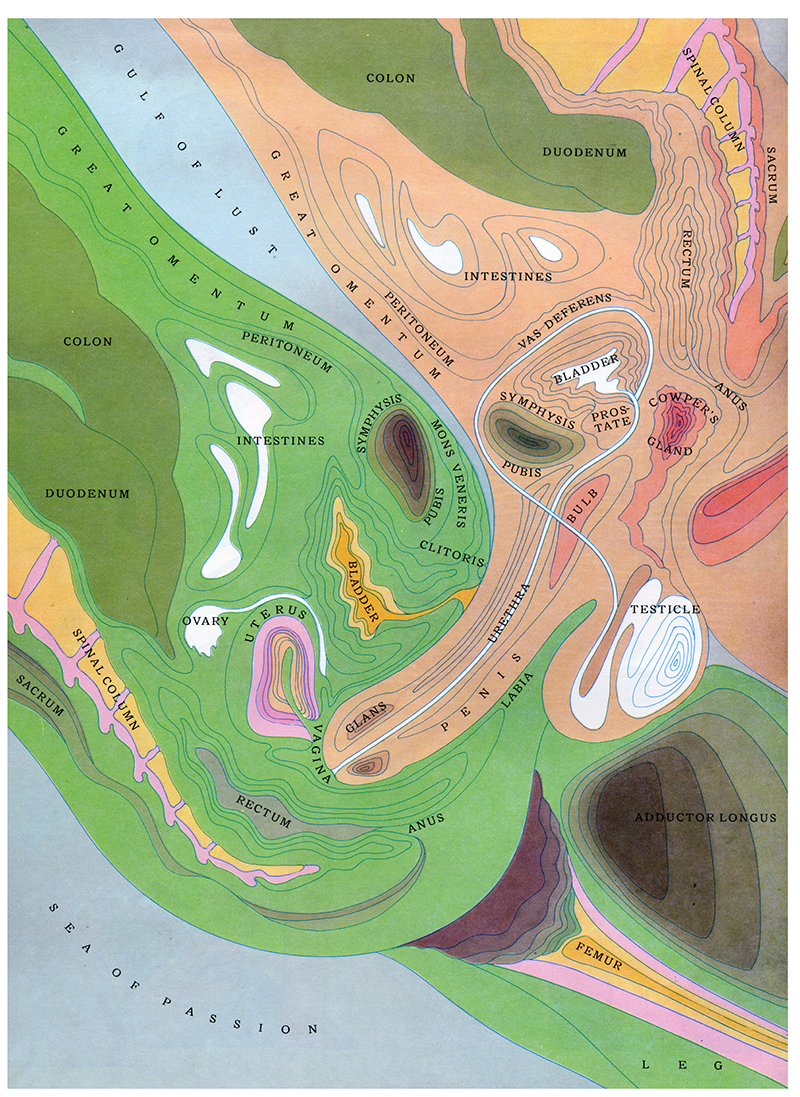
Last weekend’s New York Times Book Review featured a cover by illustrator Jillian Tamaki of various coupling couples in what once was taboo illustrative positions. I was shocked; shocked to see such comic sexual depiction on the cover of the former Grey Lady (i.e., the New York Times). And I was also envious that the art director, Matthew Dorfman, was allowed to do something for the special “Reading Pleasure” issue devoted to sexuality and sensuality that broke the prudish rules dating back to when I was a Book Review art director and before.
In my day, the greatest of all irrational fears among most Times editors was that an illustrator would suggest or include a phallus, triggering thunderbolts of rage raining down from higher-ups and readers alike. Of course, certain advertisers also had a sly penchant for innuendo – memorably Camel’s Cool Character Joe Camel Phallus-face – which prompted an office of “standards and practices” watchdogs. Fear bred paranoia, and when it came to going postal about illustration, no one was more lunatic than the average newspaper or magazine assistant or deputy editor.

In my case, on average of twice a week, editors accused me of allowing one or more illustrators to include an unacceptable banana, kidney, or lozenge shape — and I’m talking about a plain old curvilinear-tipped graphic device that happened to be touching some other shape. It made me gun-shy, so to speak, getting to the point that when I would show sketches I’d preempt criticism by saying, “This is not a penis.” A foolish gesture, since that made editors even more sensitive and the mirage even more vivid to the editorial guardian of good taste.
Eastern European illustrators having fled the strictures of Iron Curtain countries, with whom I worked a lot, would tell me that they were quite used to censorship for ridiculous, ideological, incorrect compositions (like a simple flag flying right instead of left, which actually did have political significance). Yet they were flabbergasted when an otherwise innocent drawing was kicked back for implying a body part or sexual taboo. Editors routinely scanned illustrations as though they were Rorshach tests — which said more about the viewer than the artist. They were convinced that illustrators were basically pranksters — or worse, revolutionaries — dedicated to fouling the purity, sanctity, and respectability of the Times.
They were paranoid but, as I learned, not always wrong.
Now, I can admit that unbeknownst to me, some illustrators did attempt to sneak a little naughty bit into their work and a few of them did appear in the paper. Yet what came first: the hidden phallus or the fear of phalluses? That I couldn’t tell you.

Seymour Chwast, Coitus Topographicus
